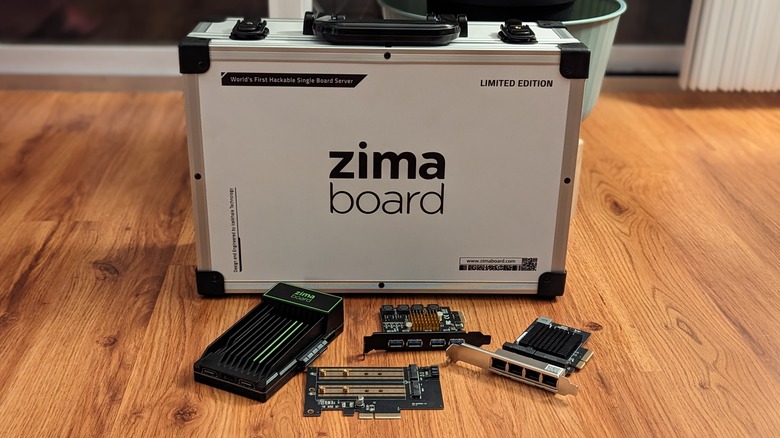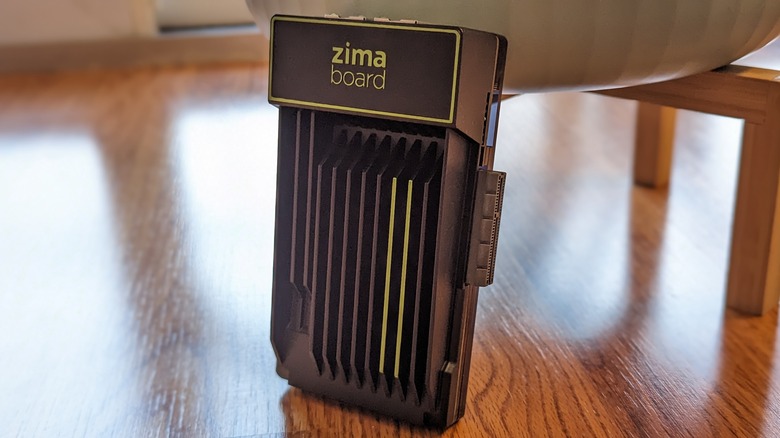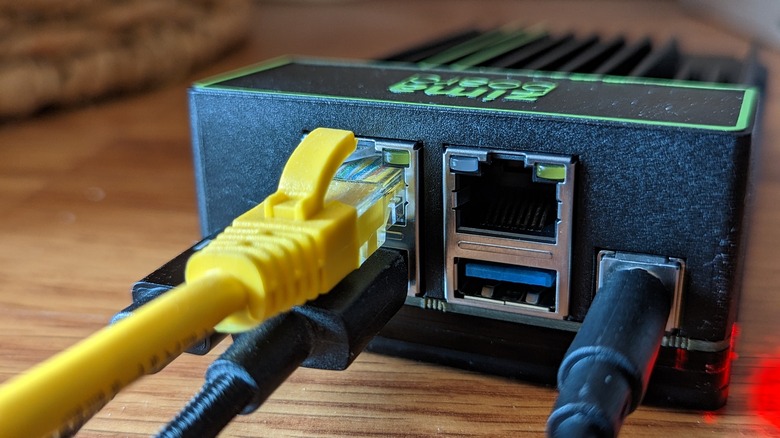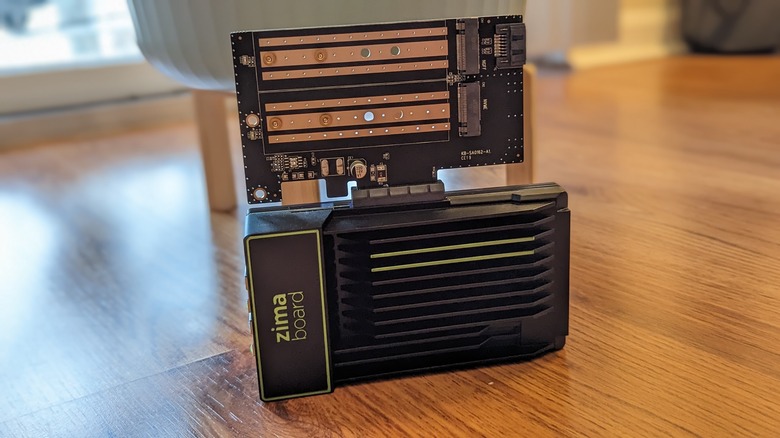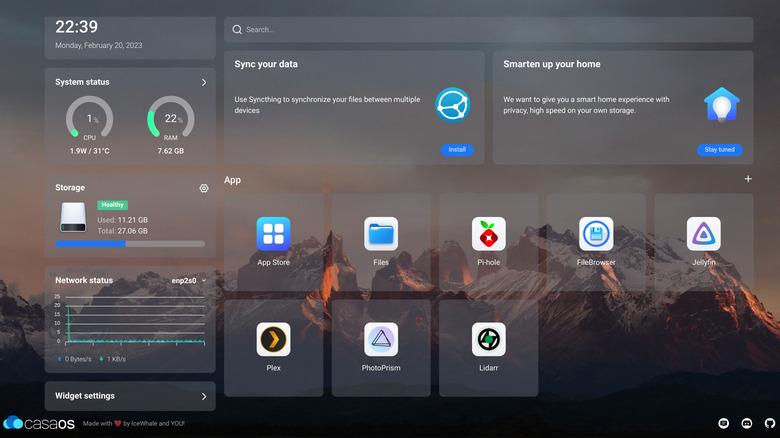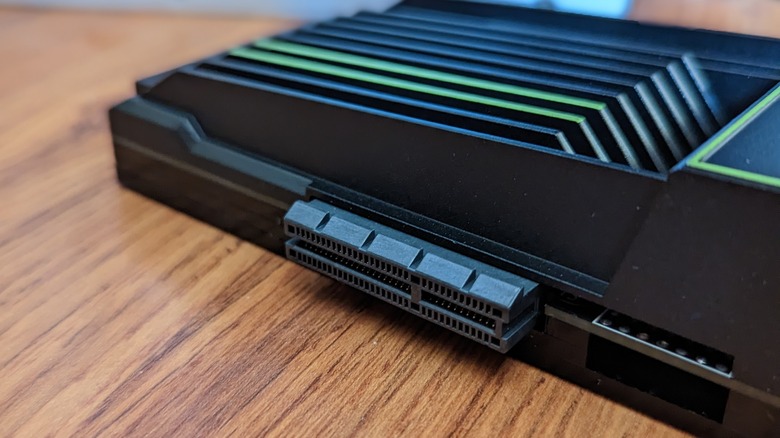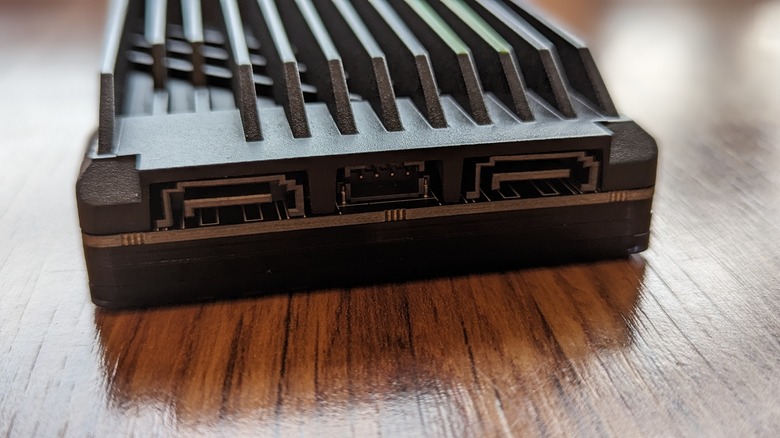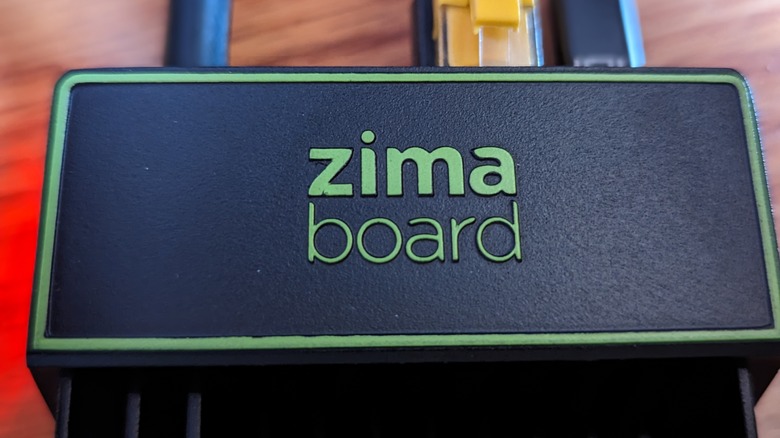ZimaBoard 832 Review: A Versatile But Expensive Single-Board Solution
- Powerful performance that can run a variety of applications
- Easy one-click install for popular software applications
- Small overall package
- The passive cooling solution can get hot
- It is an expensive single-board solution
- The software can be a bit buggy
We may receive a commission on purchases made from links.
Single Board Servers have become increasingly popular over the years, but only a few run on an x86_64 platform. The ZimaBoard from Icewhale looks to change that and even claims to be the world's first hackable single-board server. That isn't as accurate as it may seem, as there are plenty of hackable single-board computers on the market, including the Raspberry Pi, but still — ZimaBoard is, indeed, a hackable single-board server, in any case.
These single-board computers excel at a variety of basic tasks and can be incredibly beneficial. With boards like the Raspberry Pi being incredibly hard to find at MSRP, there is a major gap in the market that needs to be filled. lcewhale includes certain ports and components that help it differentiate the ZimaBoard from the likes of the Raspberry Pi — but starting at $139.99, does it do enough to separate itself from other single-board computing solutions that start as low as $35? I spent some time with the Zimaboard 832, provided by Icewhale for the purpose of this review, to figure out that exact question and the results are a bit of a mixed bag.
Design and ports
At 138.7 x 81.4 x 34.9mm and weighing 278g, the ZimaBoard is much smaller than I expected. In fact, it occupies roughly the same footprint as my Pixel 7 Pro, which is minuscule in the computing world. The single-board computer is covered by a large passive heatsink, that does a relatively good job of keeping itself from overheating. I was able to push it to a point where it felt quite warm, but it never actually stuttered or overheated during my time with it.
As opposed to many single-board servers that use a USB port for power, the ZimaBoard uses a 6W barrel connector for power. The ZimaBoard also includes a variety of ports including two SATA 6.0 gb/s ports as well as two USB 3.0 ports. It doesn't have the 26-pin gpio (general-purpose input/output) connector of the Raspberry Pi, but Icewhale did include a PCIe (peripheral component interconnect express) 2.0 4x slot. This slot can be used to power many add-on cards, including external GPUs for enhanced graphics performance.
Curiously the ZimaBoard uses a Mini-DisplayPort for its video out. Luckily it is capable of 4K 60Hz performance. I would have preferred a standard HDMI out or even a USB-C port for its video out. A USB-C port would have allowed video out while also allowing even further customization options. It also has two built-in GbE LAN Ports for wired connectivity.
Available configurations
The ZimaBoard comes in a few different configuration options and each has its own price point. The ZimaBoard 216 includes a dual-core Intel Celeron N3350 CPU (Central Processing Unit) that operates between 1.1GHz and 2.4GHz. It has 2GB of RAM and 16GB of eMMC 5.1 storage.
The ZimaBoard 432 comes with an Intel Celeron N3450, quad-core CPU that operates between 1.1GHz and 2.2GHz. It has 2MB of L2 cache along with 4GB of RAM and 32GB of eMMC 5.1 storage. The ZimaBoard 832 keeps the same CPU and storage options as the ZimaBoard 432 but ups the total RAM to 8GB.
All options come with an Intel HD Graphics 500 GPU that supports 1080P video, H.264, H.265, MPEG-2, and VC-1 video decoding. It also has Intel's VT-d and VT-x virtualization technology onboard. The ZimaBoard 216 will run you $139.99, the ZimaBoard 432 costs $169.99, and the ZimaBoard 832 will set you back $229.99.
Accessories and expansion cards
There are a variety of additional accessories and cards that you can get from Icewhale to expand the ZimaBoard's capabilities. You can get a 2.5-inch hard disk stand for less than $10, an Intel AX210 Wi-Fi 6E PCIe card for $40, a 10G ethernet adapter for $70, a 2.5G ethernet adapter for $30, a 4-port USB adapter for $15, and an NVMe SSD adapter for $15.
Now you may not need any of these additional cards to achieve your desired build, but each one offers an extension of what is available with the default configuration. You can easily expand the available USB ports and ethernet cards or add the Wi-Fi connectivity that is sorely lacking.
I absolutely hate eMMC storage and would prefer any type of additional storage. You can use the integrated SATA ports to connect all kinds of storage options, but if you want the fastest possible storage, the M.2 SSD card would be particularly useful.
Software
Every ZimaBoard purchase comes preinstalled with the docker-enabled CasaOS, which is a version of Linux that is based on Debian. It is an easy-to-use and configurable OS that has a ton of versatility. CasaOS comes with a built-in file server and an app store to easily expand its capabilities.
All you have to do is figure out the ZimaBoard's IP address (internet protocol) and point your browser to that address. It might sound tough, but it is usually readily accessible through your router's built-in software. The left side of the browser gives you the overall hardware performance, temperature, available storage, and network status.
The right side is where the App Store lives — and where much of the magic happens. You can one-click install a variety of applications including Jellyfin, Plex, PieHole, as well as many others. Each one allows the ZimaBoard to take advantage of new and additional features.
In addition to CasaOS, the ZimaBoard can be configured to run a variety of operating systems. It officially supports Linux, Windows, OpenWrt, pfSense, Android, and LibreELEC. Linux and Windows add a bit of versatility that allows you to take advantage of the various ports and enable all kinds of features. To test this out, I installed Lakka, a retro gaming-focused Linux Distro. It was installed without a hitch and let me play a variety of games through an emulator.
Performance
I had got to test the ZimaBoard 832 and the performance was fantastic, but I did have a major hiccup during my testing. I wanted to test its performance with Pi-hole, which is a home network ad blocker. To my surprise, the ZimaBoard didn't even break a sweat running the Pi-hole application. CPU usage routinely stayed under 5% utilization and the RAM hovered around 20%.
I was pleased to find that the ZimaBoard could act as a true server and allow multiple applications to run at the same time. Not only did I install Pi-hole, but I quickly added a backup hard drive with over 15,000 photos to test its ability to operate as a file server. Once again it handled this task without issue. Once I shared the photos folder, all of the computers on my network were able to see the pictures.
It was also easy to install applications such as Plex and Jellyfin. I don't typically use these applications, but I had no issues setting them up. I didn't get a chance to test out the ZimaBoard's ability to operate as a software router, but I suspect that it would handle the task superbly.
I did run into a weird issue where the ZimaBoard appeared to lock up after a period of time. A subsequent update seemed to fix the issue, but it was a bit jarring. It only happened one time, but it is something to note and an issue I will continue to monitor.
Retro gaming
I also installed the Linux Distribution, Lakka, to test the ZimaBoard's ability as a retro console. Knowing that this may not be the most common use for the ZimaBoard, I was curious to see how it performed under duress with its large passive cooling solution.
I tested its retro gaming performance over three generations of games. I played "Super Mario World" (Super Nintendo), "Donkey Kong 64" (Nintendo 64), and "Mario Kart: Double Dash!!" (GameCube). I played each game for about an hour and the ZimaBoard never skipped a beat. It recognized the Xbox controller that I had plugged into and just went about its business. I thought playing a GameCube game would have caused a bit of stuttering, but I never experienced any. While it's not a comprehensive test, it's a good starting point for someone who may be interested in its graphics performance.
The large metal passively cooled fins did get quite warm during my gaming test, but it never affected my gameplay. Retro gaming isn't the easiest task to perform and the fact that the ZimaBoard was able to handle it so efficiently bodes well for its overall ability to cool itself.
Final verdict
Icewhale was able to build a solid device that comes in a small package and offers some powerful performance. Icewhale is looking to fill the need that the Raspberry Pi has left wide open with its inability to supply the public's demand. The $229.99 price tag of the ZimaBoard 832 (as listed on Amazon) may cause some to scoff, but the performance was great overall. Its versatility and abundance of ports were fantastic and allow it to serve a wide variety of applications and uses. It wasn't perfect during my testing, but the update that became available did seem to fix the freezing issue.
You can also attain the ZimaBoard 832 for $199.99 from the official ZimaBoard store, where other accessories and iterations of the board can be found, too.
Overall, the ZimaBoard is a very niche product that will serve tinkerers who need extra performance quite well. I wish there was an option to install a fan for added cooling, but the passive cooling didn't cause any issues during my testing. If you don't need the extra performance, there are plenty of competitors, like the Raspberry Pi or Orange Pi, that can serve similar functionality for much less.
